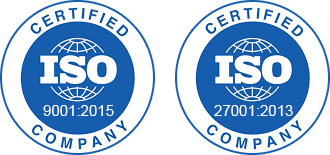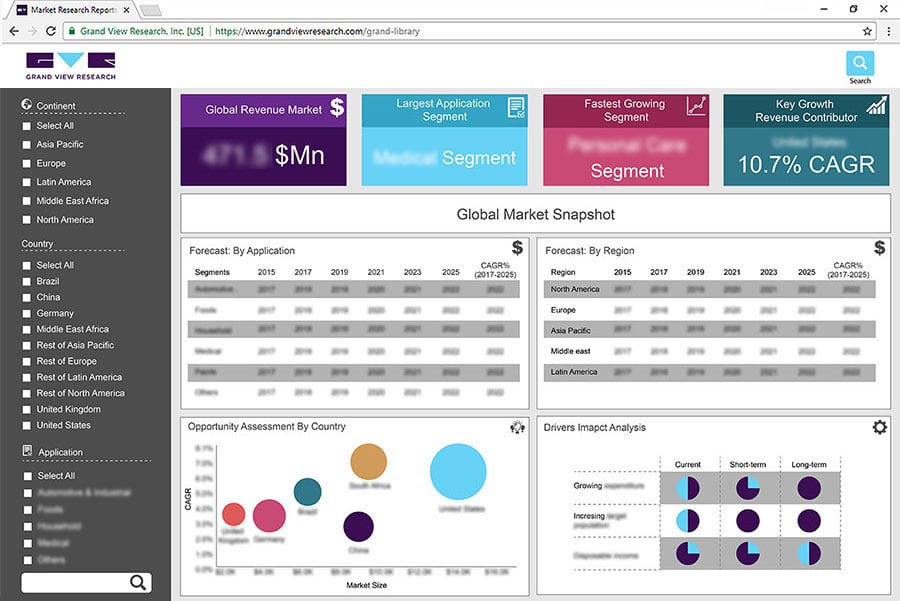- Home
- »
- Smart Textiles
- »
-
Outdoor Fabric Market Size & Share, Industry Analysis Report, 2025GVR Report cover
![Outdoor Fabric Market Size, Share & Trends Report]()
Outdoor Fabric Market Size, Share & Trends Analysis Report By Application, By Regional Outlook, By Competitive Strategies, And Segment Forecasts, 2019 To 2025
- Report ID: GVR5560
- Number of Report Pages: 0
- Format: PDF, Horizon Databook
- Historical Range:
- Forecast Period: 1 - 2025
- Industry: Advanced Materials
The global outdoor fabric market is expected to witness significant growth over the forecast period on account of rising demand for smart textiles, fire-resistant, and polymer-coated fabrics. Surging demand for these products in building and construction, healthcare, and protective clothing industries owing to their superior properties is likely to drive the market.
Outdoor fabrics are majorly used in cushions, awnings, umbrellas, and canopies, among others. In the marine industry, they are used for the production of enclosures, biminis, and boat and sail cover. Increasing demand in the automotive industry for fabric convertible topping, upholstery, and carpeting is poised to have a positive impact on market growth.
Outdoor textiles are manufactured from a variety of synthetic fibers, polyester, rubber, olefin, and various blends of cotton. These chemically treated outdoor textiles repel water, resist soiling, and impedes mildew formation. In addition, functional characteristics such as UV resistance, colorfastness, and cleanability of products are projected to fuel their demand. Fire-resistant textiles are majorly used in protective clothing for firefighters, bomb disposal crews, naval forces aboard ships and submarines, and nuclear, biological, and chemical operations along with several other defense and industrial applications.
Rapid industrialization and stringent government regulations regarding the safety of employees at the workplace are anticipated to encourage the development of fire-resistant fabrics for protective clothing. Fire blockers in seat & upholstery and insulation panels are estimated to augment the demand for fire-resistant fabrics, thereby propelling the outdoor textile market.
Rubber coated fabrics are majorly used in awnings, canopies, roofing, furniture & seating on account of improved elasticity, flexibility, high tensile strength, and water and fireproof finish. Rising consumer interest for home interior and improving public infrastructure are the key trends escalating the demand for rubber-coated fabrics across the globe.
Spiraling demand for polymer-coated textiles in the automotive industry for the production of airbags and upholstery is expected to work in favor of the global outdoor fabric market. Since these are essential elements of a vehicle, the upswing in the demand for light vehicles is likely to subsequently bolster the demand for polymer-coated fabrics, which will further boost the growth of the market.
Smart textiles are poised to experience high growth over the forecast period on account of numerous potential applications in medical, transportation, energy, security communication, and electronics. Research & development of wearable textile-based personal systems allowing health monitoring, protection, and safety are gaining momentum, thereby fostering the growth of the market.
Residential application accounts for a sizeable share in the market owing to the increasing use of the product for the manufacturing of awnings, drapery, furniture covers, shade sails, cushions & pillows, umbrellas, and pergola canopies. Waterproofing characteristics and high UV resistance are projected to contribute to the growth of the segment during the forecast period.
Marine applications of outdoor fabrics include awnings, boat covers, biminis & tops, curtains, dodgers, interior & exterior cushions, sail bags & sail covers, tarps, weather clothes, and windshield cover. The demand for the product is anticipated to remain strong in this application segment throughout the same period. A combination of water and moisture resistance, durability, and comfort is supporting the demand for these fabrics in marine applications.
Outdoor textiles are widely used in the healthcare industry for privacy curtains, blankets, beddings, medical furnishing, and floor and wall coverings. The demand for the products is estimated to increase over the forecast period on account of its high abrasion resistance, cleanability, and safety.
North America is expected to represent a significant share in terms of revenue in the Outdoor Fabric market. Flourishing the marine and the automotive sectors is one of the primary factors stoking the growth of the regional market. Increasing the use of these fabrics in innovative and decorative applications along with rising awareness regarding their benefits is supplementing the growth of the Outdoor Fabric market in the Middle East and Africa.
On the other hand, Asia Pacific is likely to post a noteworthy CAGR during the forecast period. The growth of the region can be attributed to rising demand for the product from developing economies such as China, India, and Thailand on account of increasing industrialization.
Some of the prominent companies operating in the global outdoor fabric market are 3M Company; E. I. Du Pont De Nemours and Company; Saint Gobain S.A.; BASF SE; Kolon Industries Inc.; Lakeland Industries, Inc.; Low & Bonar PLC; Milliken & Company; Klopman International; W. L Gore & Associates, Inc.; Glen Raven, Inc.; Cetriko, SL; and Sunbrella Fabrics.
Share this report with your colleague or friend.
![gvr icn]()
NEED A CUSTOM REPORT?
We can customize every report - free of charge - including purchasing stand-alone sections or country-level reports, as well as offer affordable discounts for start-ups & universities. Contact us now
![Certified Icon]()
We are GDPR and CCPA compliant! Your transaction & personal information is safe and secure. For more details, please read our privacy policy.
We are committed towards customer satisfaction, and quality service.
"The quality of research they have done for us has been excellent."





